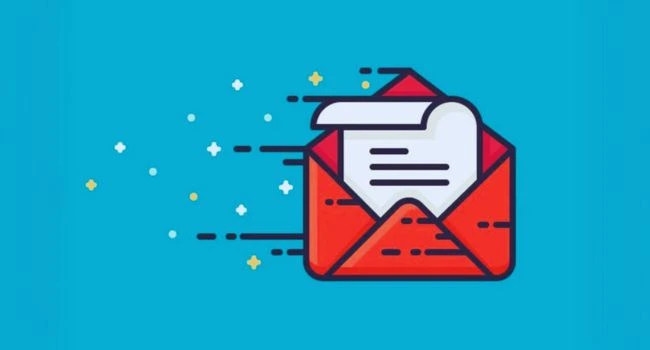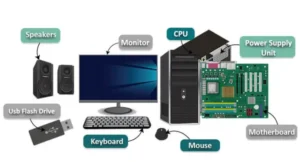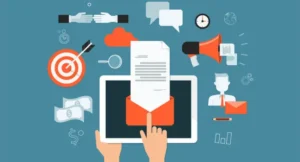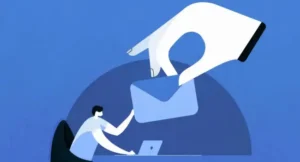Keeping your email list cleaning helps your messages reach people who want to hear from you. Over time, your email list hygiene can get messy. Bad emails can pile up. These include fake addresses and people who never open your emails.
Good email marketing best practices start with a clean list. A strong email marketing strategy always includes regular list cleaning to maintain high engagement. When your list is full of active readers, more people open your emails. This means better results for your business.
Cleaning your email list is simple. Remove emails that bounce back. Take off people who never read your messages. Get rid of spam traps that hurt your sending score.
With a clean list, you waste less time and money. Your messages go to real fans. This makes your email marketing more powerful right away.
What Is Email List Cleaning?
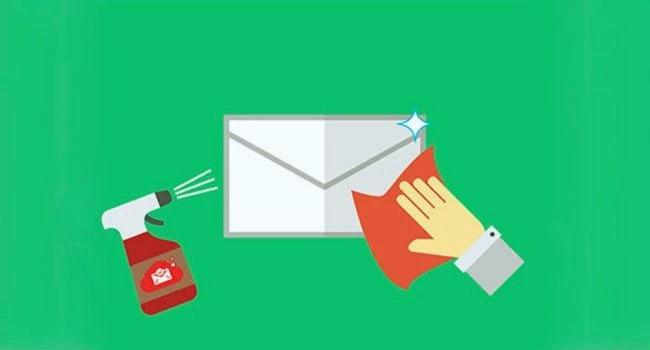
Email list cleaning keeps your messages reaching the right people. It’s also called email scrubbing. This means removing bad emails from your list. Bad emails are ones that don’t work anymore or belong to people who never read your messages.
A clean email list helps more of your emails get opened. It stops your messages from bouncing back. Your emails will reach more real people who care about what you send.
Think of list maintenance like cleaning your bedroom. You throw away old toys to make space for new ones. In the same way, removing old emails makes room for active readers.
Regular list maintenance is important. It keeps your email campaigns working well. With a clean list, your messages will reach more interested people.
Why Email List Cleaning Matters
Cleaning your email list helps lower your bounce rate significantly. Improving your email delivery rate begins with removing bad addresses and inactive subscribers. Hard bounces vs soft bounces both hurt your sending reputation. By reducing email bounce rates, your messages reach more people who actually want to hear from you.
Fewer Bounced Emails
When emails don’t reach people, we call this a bounce rate. It’s important to know about different types of bounces. Hard bounces vs soft bounces tell you different things about your emails.
Hard bounces happen when an email address doesn’t exist anymore. These are permanent problems. Soft bounces are temporary issues, like a full inbox. They might fix themselves later.
Having too many bounced emails hurts your sending reputation. Email providers might think you’re sending spam. Reducing email bounce rates keeps your messages reaching real people.
A clean list means fewer bounces overall. This helps your emails get delivered properly. More people will see what you send. Cleaning your list regularly keeps your email reputation strong and healthy.
Better Open Rates
Cleaning your email list helps more people open your messages. When you remove people who never read your emails, your email engagement goes up right away. This is because you’re only sending to people who actually want to hear from you.
Studies show that clean email lists can get up to 40% higher open rates. This means many more people will see what you send them. Increasing open rates is one of the fastest ways to improve your email marketing results.
Open rate optimization starts with a good clean list. Monitoring key email marketing KPIs like open and click rates helps you track the impact of list cleaning. When your numbers go up, you know your messages are reaching interested readers. Your hard work creating emails doesn’t go to waste. More opens also means more people clicking on your links and buying your products.
Less Spam Trouble
Keeping your email list clean helps you avoid serious spam problems. When people mark your emails as spam, it hurts your sending reputation. These spam complaints can make email providers block all your messages.
Another danger is spam trap detection. Spam traps are fake email addresses used to catch bad senders. If you email these addresses, you might get blacklisted. This means none of your emails will be delivered.
Regular cleaning of your list leads to spam complaint reduction. When you only send to people who want your emails, fewer people will mark you as spam. This keeps your messages going to the inbox instead of the junk folder.
Email providers watch how many complaints you get. If your number stays low, they trust you more. A clean list means better delivery and less worry about being blocked for spam issues.
Saves Money
Cleaning your email list helps you spend less money on your email marketing. Most email services charge you based on how many people are on your list. If you have 5,000 emails but 2,000 never open your messages, you’re paying for nothing.
Removing these inactive contacts cuts your costs right away. This leads to email marketing ROI improvement because you spend less while getting the same or better results. ROI means “return on investment” – how much you get back for the money you put in.
Sending emails to people who never read them is wasted time & money. Think about it like mailing letters to empty houses. The postage costs add up, but nobody sees your message.
When you only keep active subscribers, every dollar you spend works harder for you. Your campaigns become more efficient. This means better results without spending more money. Smart businesses clean their lists regularly to save money.
What Happens If You Don’t Clean Your Email List?

Ignoring email list cleaning leads to serious problems for your marketing. Addressing email deliverability issues early helps keep your messages in the inbox instead of the spam folder. When you don’t clean your email list, you waste money on useless contacts and your messages get ignored. Your important emails might even end up blocked by email providers.
Emails Go to Spam
When you don’t clean your email list, many of your messages end up in spam folders. Internet companies watch how many emails bounce back to you. If this number gets too high, they think you’re sending junk mail.
ISP filtering avoidance is important for every business that sends emails. ISPs are Internet Service Providers like Gmail or Outlook. They use special filters to protect their users from spam. If you keep sending to bad addresses, these filters will catch you.
Your sending reputation can get so bad that you end up on a blacklist. Blacklist monitoring helps you check if your emails are being blocked. Once you’re on a blacklist, most of your emails won’t reach anyone.
Clean lists help you avoid these problems. When you only send to good addresses, email providers trust you more. This means your messages go to the inbox where people can see them. Regular cleaning keeps your emails out of spam folders.
Wasted Time & Money
Not cleaning your email list means you’re throwing away your hard-earned money. When you send emails to addresses that don’t work or to people who never read them, you get nothing back for your effort.
Think about mailing paper letters to empty houses. You pay for stamps, envelopes, and printing. But no one ever reads your message. Email works the same way but with digital costs.
Email fatigue solutions start with removing uninterested contacts. Email fatigue happens when people get too many messages and stop opening them. By sending only to interested readers, your messages become special again.
Campaign ROI improvement comes naturally after cleaning your list. ROI means the value you get back from what you spend. With a clean list, you spend less money reaching more interested people.
Most email services charge based on how many contacts you have. Why pay for subscribers who never open your emails? A smaller, more engaged list saves money while bringing better results.
Low Engagement
A messy email list hurts your marketing results in several ways. When your list has too many inactive people, your overall numbers look worse than they should. This makes it hard to know if your emails are actually working well.
Subscriber retention becomes difficult with an unclean list. You can’t keep people interested if they weren’t interested in the first place. Many might have forgotten they signed up for your emails long ago.
Your email performance metrics suffer too. These are numbers that show how well your emails work. Things like open rates and click rates drop when your list is full of inactive subscribers.
When you clean your list, only engaged readers remain. This gives you a true picture of how your emails perform. You’ll see higher open rates and better results from every message you send.
How to Clean Your Email List (6 Easy Steps)
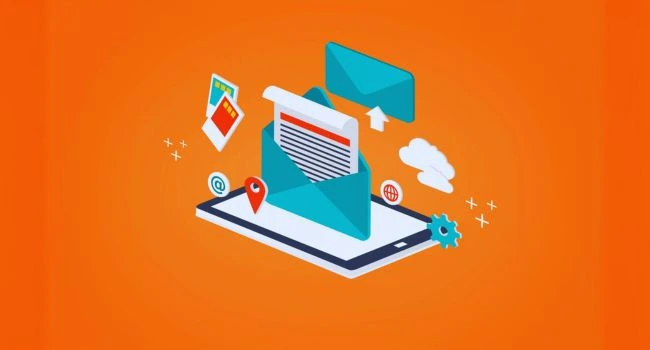
Discover how to clean your email list in 6 easy steps. Regular cleaning helps you reach real customers. Learn these simple techniques to improve your email success today!
Step 1: Remove Hard Bounces & Invalid Emails
Clean up your email list by finding and fixing problem addresses. Use email verification tools to spot fake or mistyped emails before sending messages. Invalid email detection helps you find addresses that will never receive your messages. Using email automation tools can simplify this verification process by scanning your list for errors automatically. These tools check if the email format looks right and if the address actually exists. Email verification saves you time and improves your sending reputation.
When you send to real addresses, more of your emails reach people who want them. This keeps your bounce rate low. It also prevents your messages from being marked as spam. Regular cleaning of your email list helps your campaigns succeed. Remove these problem emails early to save money and get better results from your marketing efforts.
Step 2: Fix Soft Bounces
Soft bounces happen when emails can’t be delivered right away. These are temporary problems that can be fixed. SMTP errors tell us what went wrong with your email delivery. These might include full inboxes or busy servers. Soft bounce handling is important for successful email campaigns. When you see these errors, don’t give up right away. Try sending your message again later. Most email systems will retry sending for up to 72 hours.
Create a plan for dealing with repeated soft bounces. If an email bounces three times, consider moving it to your “problem addresses” list. Check for patterns in your soft bounces. Sometimes many bounces from one company might mean their server is blocking you. Regular attention to these temporary failures will improve your delivery rates and keep your sender reputation strong.
Step 3: Delete Duplicate Emails
Having the same person on your email list multiple times causes problems. List validation tools help you find and fix these duplicate contacts. These smart tools scan your entire list for matching email addresses. They show you where the same person appears more than once. Email list pruning means removing unnecessary contacts to keep your list healthy. When you send to duplicates, the same person gets your message many times. This annoys your contacts and may make them unsubscribe. It also costs you extra money to send the same email twice. Some validation tools can automatically merge duplicate contacts.
This saves their preferences and activity history. Regular cleaning of your email list improves your sending reputation. It also gives you more accurate reporting on how well your campaigns work. Take time each month for this important cleaning task.
Step 4: Find Inactive Subscribers
Look for people who never open your emails. These quiet subscribers hurt your email performance. Most email tools show who hasn’t clicked or opened emails in months. Remove inactive subscribers to improve your open rates instantly. This makes your email campaign look more successful. Inactive subscriber handling should be part of your regular email routine. First, try to wake them up with a special message.
Ask if they still want your emails. Give them a reason to stay engaged. If they still don’t respond, it’s time to let them go. Your email costs will go down. Your delivery rates will improve. Email providers will see that people like your messages. This helps more of your emails reach the inbox instead of spam folders.
Step 5: Send a Re-Engagement Email
Before removing quiet subscribers, try to win them back. Re-engagement campaigns help wake up people who haven’t opened your emails lately. Send them a special message asking if they still want to hear from you. Winback campaigns often use eye-catching subject lines like “We miss you!” or “Are we breaking up?” Make these emails different from your regular messages.
Offer something valuable to get their attention. This could be a special discount or helpful information. Keep your message short and clear. Ask them to click a button to stay on your list. Some people might have just been busy. Others may have forgotten why they signed up. Good re-engagement campaigns can save up to 25% of inactive subscribers. This is much cheaper than finding brand new subscribers.
Step 6: Clean Your List Regularly
Make email list cleaning a habit, not a one-time task. Regular list maintenance keeps your contacts fresh and accurate. Put a reminder on your calendar every 3-6 months for this important job. Email list hygiene maintenance means checking for problems before they hurt your results. Look for bounced emails, inactive subscribers, and duplicates each time. Some email providers offer automatic cleaning tools. These can make your job much easier.
Good list hygiene improves your delivery rates and open rates. It also saves you money by not sending to dead-end addresses. Your email reports will show better results after cleaning. This makes it easier to see what’s working in your campaigns. Professional marketers know that clean lists are the secret to email success. Make list cleaning part of your regular marketing routine.
The Fastest Way: Use an Email List Cleaning Service
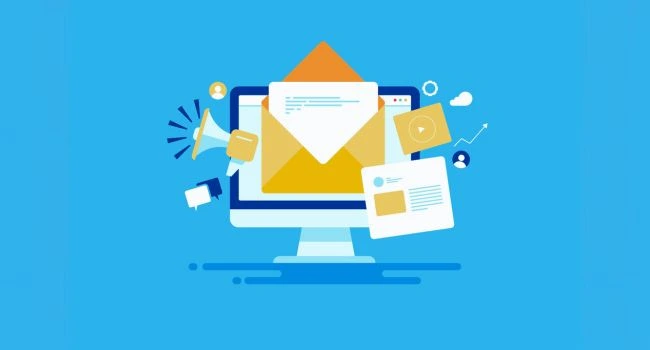
Save time by using special tools for cleaning your email list. The best email verification services can check thousands of addresses in minutes. Popular options like ZeroBounce and NeverBounce do the hard work for you. These tools find bad emails automatically. They check if addresses exist and can receive messages. Email list cleaning comparison shows each service has unique features. Some focus on finding invalid emails.
Others help identify inactive subscribers too. Most services charge based on how many emails you check. The cost is much less than sending to bad addresses. These tools connect easily to popular email platforms. You can upload your list and get results quickly. Professional marketers rely on these services to maintain perfect email lists.
How to Keep Your Email List Clean Forever
Want better email results? Start with a clean list. How to Keep Your Email List Clean Forever isn’t just a goal—it’s a process anyone can master. These simple steps will transform your email marketing and improve your results immediately.
Use Double Opt-In
Double opt-in is the best way to build a clean email list from the start. This method asks people to confirm they want your emails after they sign up. When someone enters their email on your form, they get a confirmation email. They must click a link in that email to join your list. This extra step prevents fake or mistyped email addresses. Lead verification happens naturally through this process. Only real people who really want your content will complete both steps. This keeps your list clean right from the beginning. Your email stats will look better instantly. Your delivery rates will stay high. Email providers will trust you more. This simple step saves you from cleaning up problems later. Many email services offer this feature automatically.
Send Welcome Emails
Welcome emails show new subscribers you value them. Strong welcome email strategies create a good first impression. These first messages get opened more than any other emails you’ll send. Take advantage of this special moment. Tell new contacts what to expect from you. Ask them questions about their interests. Email segmentation begins with these early interactions. You can put people into different groups based on how they respond. Some might click links about one topic but not others. This tells you what they care about most. Send your welcome email right away when someone signs up. People are most excited about your content at this moment. A good welcome series can include 3-5 messages over two weeks.
Remove Unsubscribers Quickly
When someone wants to leave your email list, respect their choice immediately. Managing unsubscribes properly is a legal requirement in most countries. Remove these contacts from your list right away. Never wait more than 10 days to process these requests. Most email systems can handle this automatically. Your unsubscribe link should work with just one click. Don’t make people fill out forms or answer questions to leave.
Email sunset policies help you plan for ending relationships gracefully. These are rules about when to stop emailing someone. Having clear policies protects your reputation. It also keeps you from sending unwanted messages. Remember that keeping unwilling subscribers hurts your results. It’s better to have a smaller list of people who actually want your emails.
How Often Should You Clean Your Email List?
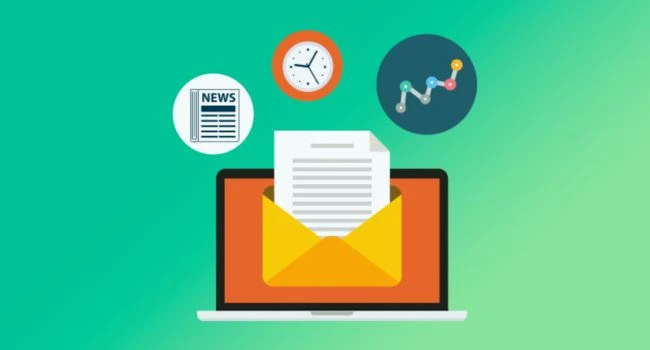
When to scrub email lists depends on how fast your list grows. Most experts agree that every 3-6 months works best for most businesses. If you have a very active list, clean it more often. Companies with slow-growing lists might clean just twice a year. Automated email list cleaning makes this job much easier.
Set up your system to flag problem emails automatically. Look for bounces, inactive subscribers, and strange patterns. Some email tools can clean your list while you sleep. This regular maintenance keeps your delivery rates high. It also improves how your emails perform. Each cleaning session removes dead weight from your list. This makes your email marketing more powerful and cost-effective.
Common Email List Cleaning Mistakes to Avoid
Keeping your email list clean is important. But many people make common email list cleaning mistakes to avoid. These errors can hurt your campaigns. Learn how to fix them easily. Save time and boost results. Stay professional and efficient.
Waiting Too Long Between Cleanings
Delaying email list maintenance hurts your results. If you wait too long, your list gets messy. Bad emails pile up. Bounces and inactive contacts increase. This slows list quality improvement. Regular cleaning keeps your list fresh. Remove old or invalid emails often. This helps your emails reach the right people. A clean list means better open rates. Don’t ignore it—small fixes now save big problems later. Stay consistent for the best performance.
Not Checking for Spam Traps
Old email lists can hide dangerous spam traps. These traps hurt your domain reputation scoring. If you hit them, your emails may go to spam. Spam trap avoidance keeps your sender score high. Always scan old lists before using them. Remove invalid or suspicious emails. This protects your deliverability. A clean list means better inbox placement. Regular checks prevent future problems. Stay safe by cleaning often. Your email success depends on it.
Ignoring Inactive Subscribers
Inactive subscribers hurt your email performance. They lower open rates and engagement. Instead of removing them right away, try reactivating subscribers first. Send a special offer or friendly reminder. Ask if they still want your emails. This solves email fatigue solutions gently. If they don’t respond, then clean your list. Keeping inactive contacts too long wastes effort. A smaller, engaged list works better than a big, tired one. Regular check-ups keep your list healthy.
Start Cleaning Your Email List Today!
A clean email list works better. How to clean email lists the right way? Remove old, invalid addresses. Fixing cleaning dirty email lists boosts your results fast. Watch your open rates grow! Start now for better emails.
FAQs About Email List Cleaning
1. What is email list cleaning?
Email list cleaning means removing bad addresses. Use email verification methods to find them. This helps your emails get delivered. List management tools make cleaning easy. Your campaigns will work better!
2. How often should I clean my email list?
Clean your list every 3-6 months. Use automated cleaning workflows to save time. Follow email validation best practices for better results. Keep your list fresh and effective!
3. What’s the difference between hard bounces and soft bounces?
Hard bounces mean permanent delivery failure. Soft bounces are temporary issues. Use SMTP validation to spot them. Knowing hard bounce vs soft bounce helps clean your list better!
4. Can’t I just ignore inactive subscribers?
No! Inactive users hurt your sender score. Try reactivation campaigns first. Use behavioral segmentation to target them better. Clean your list regularly for best results.
5. Is an email cleaning service worth it?
Absolutely! Professional cleaning improves email verification accuracy dramatically. Services like EmailListValidation reports save hours of work while ensuring pristine list quality. Smart marketers always use them!

